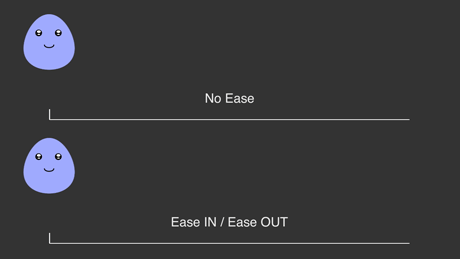This principle is used in every movement seen in animation, without it movement can seem unrealistic or robotic; unless that's what you're going for. Every action starts slow, gains speed then gets slow again and this is done by following the idea of having more drawings at the beginning of the action, one or two in the middle and then more at the end too. Fewer drawings make for faster action and more drawings make for slower actions, a way to think about it is 'cushioning' the animation. Without this cushioning the animation can look quite choppy and unrealistic, whereas if every action is eased in and out of it softens every action. I have chosen a little animation below to show how much difference it can make and I like this as it shows how effective it can be with a side by side comparison. The first with no ease looks very unrealistic and like it has been made on a computer, whereas the second has speed to it, it looks like it's slowing down and speeding up with just the use of different amounts of frames.

No comments:
Post a Comment